The University Avenue Train Depot: A Streamline to the Past
In the final years before the great mid-century decline of therailroads, Palo Alto got itself a new train station. The Southern Pacific Railroad, still going strong in 1941 as a popularway to travel the country’s western coast, decided to replace Palo Alto’s aging depot with a sleek, modern station worthy of the city’s hard-earned hub status. The new station was constructed in ultra-hip Streamline Moderne, a style that raced with the energy of a new age and looked toward the machines of the future. It turned out to be an ironic twist. For while the station’s architecture spoke to modernity, the trains it served soon would become near relics of the past.
The base of University Avenue at Alma Street has long been a transportation center of Palo Alto. In the city’s infancy, the first sheltered station --- no more than a bench and overhanging roof really --- was constructed on the Palo Alto side of the tracks for an auction sale of town lots. After being replaced by a larger enclosed structure, a new, yellow-tinged station was built on the Stanford side of the tracks with archways and some of the spectacle of the nearby university. As
the local boarding point for the line to San Francisco, the new station served Stanford’s 400 students and Palo Alto’s 318 residents.
But this second edition was never particularly admired by locals. In a 1934 column, Palo Alto Times editor Dallas E. Wood criticized the station’s "antiquity, architectural unloveliness and other deficiencies." And as early as the 1920s, his paper had been calling for a more "pretentious depot." Eventually, in conjunction with the construction of the University-Alma Street underpass, Southern
Pacific announced plans for a new station for Palo Alto. On March 8th, 1941, a grand parade of 2,000 people, 400 horses and a 40-by-75 foot flag marched down University Avenue to dedicate the new station.
As it happened, the blueprints for the station were laid out at the height of the Streamline Moderne architectural craze. Closely related to Art Deco, Streamline Moderne had a kind of "flash and gleam" beauty. Its look at the time --- and remarkably, even six decades later --- surged with progress and motion. As Professor David Gebhard has written, "Streamline Moderne offered a glimpse of the future. What it portended was a fully automated world in which machines, controlled by man, were everywhere invisible." With its dramatic rounded corners, narrow horizontal layering, glass brick windows and metal doors, Streamline Moderne conjured up a sense of movement and speed.
In some cases, Streamline Moderne buildings were actually constructed to resemble the purpose they served. For instance the Palo Alto station was designed by Southern Pacific architect J.H. Christie to resemble a streamlined train while Palo Alto architect Birge Clark gave the local Sea Scout Building at the Baylands a rounded prow and porthole windows to suggest a ship.
But as the style for a railroad station, Streamline Moderne actually pointed to
a future that was increasingly moving away from rail travel. Streamline Moderne had an automobile- centered outlook that was often street or highway-oriented. And indeed, as the 1950s wore on, the popularity of passenger trains declined. A combination of the construction of the Eisenhower Administration’s Interstate Highway System and a surge in commercial air travel left few Americans looking to ride the rails. By the 1960s, only legal obligations were keeping many passenger trains running and old streamliners such as the Daylight, Starlight, and Lark had become partof railroading history.
By 1970, the railroads accounted for just 7% of passenger travel inAmerica. The following year, themajor railroads were eaten up by Amtrak, a national railroad monopolythat has never been able to revitalize the intercity passenger train business. By the mid-1980s, operatinglosses led the Southern Pacific to sell the historic route between San Francisco and San Jose to a consortium of local
transit authorities. Throughout these changes, the University Avenue Station continued to serve commuters. These days the depot serves Caltrain, the commuter service that carries workers heading for the office towers of San Francisco and the office parks of Silicon Valley.
The station itself, however, remains much as it was in 1941 and now resides on the National Register of Historic Places. One of the few true Streamline Moderne buildings in the area, the 7,000 square foot depot boasts a number of unique features, including an impressive 26-foot-long painting. John McQuarrie’s grand
--- perhaps bordering on grandiose --- mural depicts Leland Stanford
surveying the progression of America’s expansion into the West.
Renovation projects in 1981 and 2000 restored the station’s classic seating and lighting while expanding its functionality. It now serves as a transportation hub for buses, shuttles and even bicycle rental. Recently an upscale cafe set up shop in the depot to serve thirsty commuters.
Today the University Avenue depot still stands near the spot where the
first train station stood before the city itself existed. And as such, it remains witness to both an architectural style that looked forward and a railroading history rooted in our past. []
Our Reader's Memories:
"I was about 12 yrs old and rode my bike to the Sunday afternoon dedication of the new train station and the new underpass. I bought an ice cream sandwich and the weather was hot. To get a better view of the temporary platform, I climbed up a foot or two at the back of the outdoor stage and used my elbows to keep me steady on the wood railings. The officials who spoke were seated in folding chairs, with their backs just inches from me. I didn't realize the ice cream
was melting and dripping on the shoulders of a man who was the next speaker, and he didn't see the ice cream all over his shoulders. The man was former President Herbert Hoover. I finally realized what I'd done, and got down and got away so I wouldn't get caught. I'm now 82 yrs old. I also rode my bike to the Stanford campus one Sunday afternoon when the huge Stanford "War Memorial Library" was being built. The exterior was nearly done, but had scaffolding which I climbed up high. Shortly, a security guard saw my bike and heard me
climbing and yelled for me to come down. He couldn't see me as it was dark inside. I was scared I would be arrested and sent to jail so I remained silent for a long time and waited. Finally he got in his car and drove away and I climbed down in the darkness and went home."
-Marshall
Send Us Your Memory!
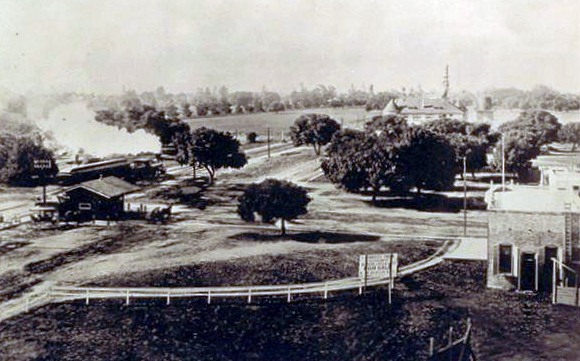
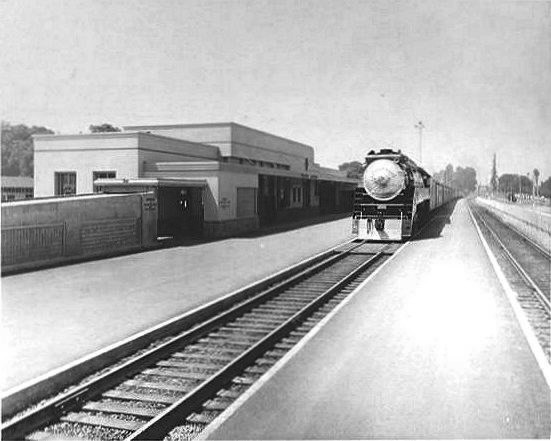
The Southern Pacific Daylight Limited pulls into the new train station in 1942. (PAHA)
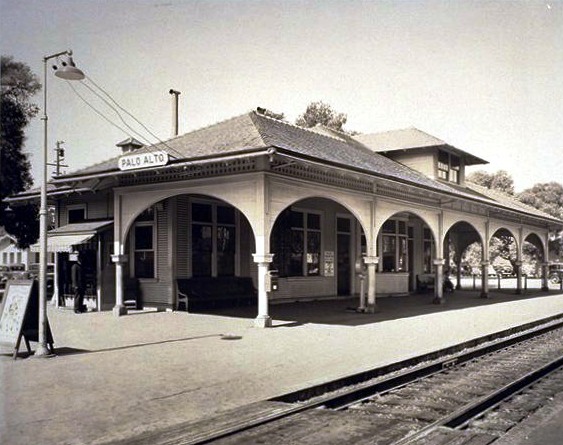
The Palo Alto train station in the 1930s, complete with shoe-shine stand. (PAHA)
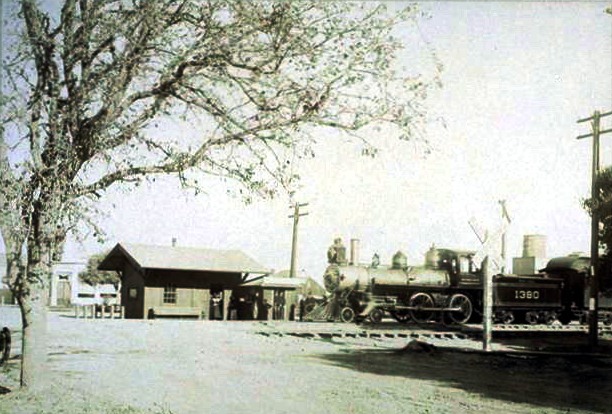
A train passes the original train depot in 1885. (PAHA)
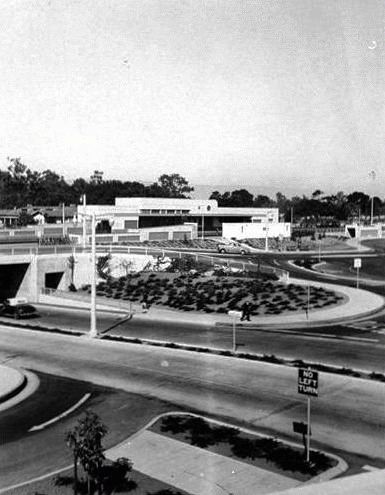
The current train depot soon after opening. (PAHA)